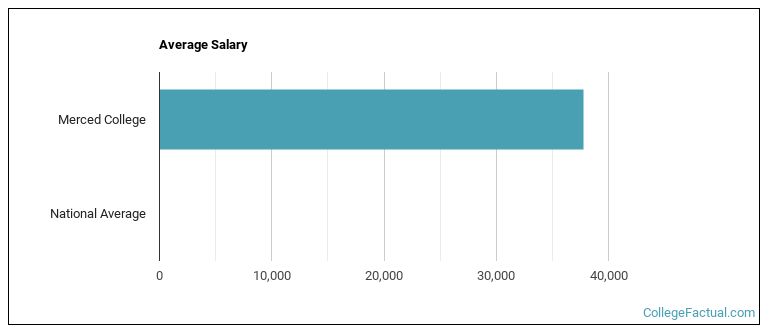 by our College Data Analytics Team
by our College Data Analytics Team
In its yearly rankings, College Factual analyzes over 2,000 colleges and universities to determine which ones are the best in a variety of categories, such as overall value, quality, diversity, which schools are the best for each major, and much more.
Merced College was awarded 63 badges in the 2025 rankings. The highest ranked major at the school is nursing.
Explore the best ranked schools for the programs you are most interested in.
Merced Community College District landed the #261 spot in College Factual's 2025 ranking of best overall colleges in the United States. The higher ed experts analyzed 2,152 colleges and universities across the nation to determine this ranking. This puts it in the top 20% of all schools in the nation. This is an improvement over the previous year, when Merced Community College District held the #929 spot on the Best Overall Colleges list.
Merced Community College District is also ranked #39 out of 161 schools in California.
Merced College has an open admissions policy, so you should not have much trouble being accepted by the school. Still, it is important to fill out the application completely and submit any requested materials, which may include proof that you have a high school diploma or the equivalent.
The student to faculty ratio is often used as a measure to gauge how much access students will have to their professors - the lower the number, the better. At Merced College, this rate is 25 to 1, which is high when compared to the national average of 15 to 1.
When estimating how much access students will have to their teachers, some people like to look at what percentage of faculty members are full time. This is because part-time teachers may not have as much time to spend on campus as their full-time counterparts.
The full-time faculty percentage at Merced College is 37%. This is lower than the national average of 47%.
The freshmen retention rate tells us what percentage of first-year, full-time students choose to continue on to their sophomore year at a particular school. The rate at Merced College is 69%, which is about average when compared to the national rate of 68%.
During the 2017-2018 academic year, there were 10,645 undergraduates at Merced Community College District with 4,333 being full-time and 6,312 being part-time.
The net price is calculated by adding tuition, room, board and other costs and subtracting financial aid.Note that the net price is typically less than the published for a school. For more information on the sticker price of Merced Community College District, see our tuition and fees and room and board pages.

Get more details about the location of Merced College.

Contact details for Merced Community College District are given below.
| Contact Details | |
|---|---|
| Address: | 3600 M St, Merced, CA 95348-2806 |
| Phone: | 209-384-6000 |
| Website: | www.mccd.edu/ |
| Most Popular Majors | Bachelor’s Degrees | Average Salary of Graduates |
|---|---|---|
| General Agriculture | 812 | NA |
| Liberal Arts General Studies | 812 | NA |
| General Psychology | 367 | NA |
| General Social Sciences | 227 | NA |
| Business Administration & Management | 137 | NA |
| Human Development & Family Studies | 118 | NA |
| Business Support & Assistant Services | 114 | NA |
| Practical Nursing & Nursing Assistants | 113 | NA |
| Sociology | 93 | NA |
| Criminal Justice & Corrections | 83 | NA |
Online courses area a great option for busy, working students as well as for those who have scheduling conflicts and want to study on their own time. As time goes by, expect to see more and more online learning options become available.
In 2022-2023, 7,887 students took at least one online class at Merced College. This is a decrease from the 8,244 students who took online classes the previous year.
| Year | Took at Least One Online Class | Took All Classes Online |
|---|---|---|
| 2022-2023 | 7,887 | 4,418 |
| 2021-2022 | 8,244 | 5,732 |
| 2020-2021 | 10,326 | 9,484 |
| 2018-2019 | 2,772 | 514 |
Footnotes
*The racial-ethnic minorities count is calculated by taking the total number of students and subtracting white students, international students, and students whose race/ethnicity was unknown. This number is then divided by the total number of students at the school to obtain the racial-ethnic minorities percentage.
References
More about our data sources and methodologies.